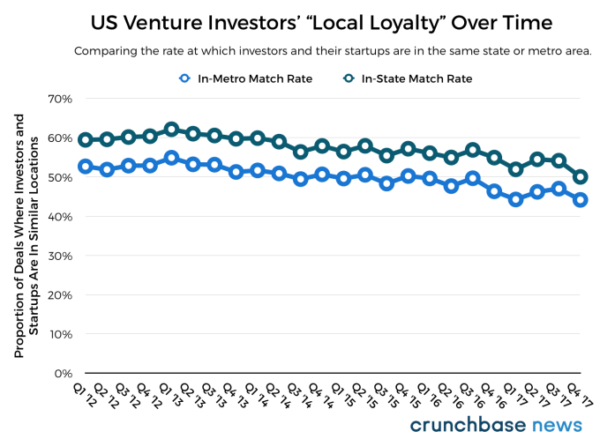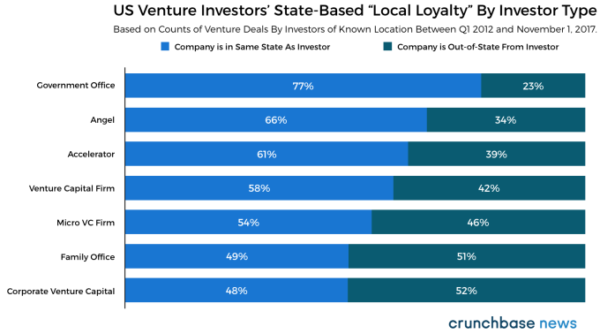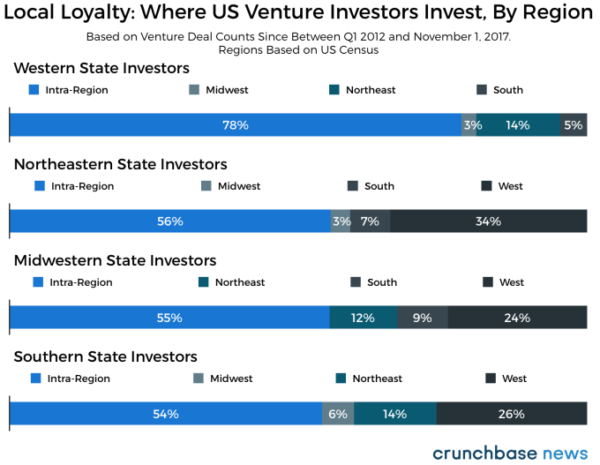This past week our portfolio company MongoDB went public. I think that occasion presents an opportunity to talk about USV’s model.
We are a small firm. We raise modest sized funds (by modern VC standards). Our first fund was $125mm, our second fund was $150mm, and we have now settled on $175mm as a good number and our past three funds have been that size.
Our typical entry point is Seed or Series A although we have an Opportunity Fund that allows us to enter later when that is appropriate. We do that once or twice a year on average.
We make between twenty and twenty five investments per fund and we expect, hope, and work hard to make sure that two or three of those investments turn into high impact companies that can each return the fund.
Although our entry point is typically Seed or Series A, we continue to invest round after round to both protect and add to our ownership. We have no requirements on ownership, but we typically end up owning between 15% and 20% of our high impact portfolio companies.
If you do the math around our goal of returning the fund with our high impact companies, you will notice that we need these companies to exit at a billion dollars or more. Exit is the important word. Getting valued at a billion or more does nothing for our model. We need these high impact companies to exit at a billion dollars or more.
Because we invest early, it generally takes seven or eight years for an investment to exit. We closed our first fund, USV 2004, in November 2004, and our first high impact exit came almost exactly seven years later when Zynga went public in late 2011.
Mongo DB represents the eighth high impact exit that USV has had. They are:
Zynga – IPO – 2011
Indeed – Sale to Recruit – 2012
Twitter – IPO – 2013
Tumblr – Sale to Yahoo -2013
Lending Club – IPO – 2014
Etsy – IPO – 2015
Twilio – IPO – 2016
MongoDB – IPO – 2017
Although MongoDB won’t be an exit until the lockup comes off and we are truly liquid, every other one of these impact investments has returned the fund it was in (or much more in the case of Twitter, Lending Club, and Twilio).
We were the lead investor in the Seed or Series A round in seven of these eight high impact companies and three of them came from seed investments. It’s easier to identify high impact companies in the late rounds, but not so easy to do that in the early rounds. That’s where our thesis based investing comes into play.
It is also important that all of our partners participate in this model. It takes seven or eight years before we can expect a new partner to contribute and Albert, who joined us in 2008, has produced the last two high impact exits with Twilio and MongoDB. John, who joined us in 2010, has already contributed one in Lending Club. I have no doubt that Andy, who joined us in 2012, and Rebecca, who joined us this week, will produce their share of high impact exits. Andy already has several in the pipeline.
So this is our model. Keep the fund sizes small. Make investments early so we can buy meaningful ownership for not a lot of money. Keep investing round after round to maintain and/or grow our ownership. And have enough high impact portfolio companies that we can get two or three of them per fund.
We have a good pipeline of high impact companies in our various portfolios so that we expect this model will keep working for the foreseeable future.
This model has more or less been the model of all three venture funds I have worked in over my thirty year period. It is time tested and it works when applied with focus and discipline and a strong investment thesis.
But with a new model, tokens, in its infancy, it begs the question of how it will impact our approach. We already have four portfolio companies that either have done or have announced intentions to do token offerings; Protocol Labs/Filecoin, Kik/Kin, Blockstack/Stack, and YouNow/Props. So we are going to figure this out in a few years. I expect the hold periods will come down as token offerings come early in a company’s life, not later. So we should know more about how this new model works in three to five years.
There are a bunch of questions that come to mind. Here are a few of them:
- Can a token based investment return a fund with more or less frequency than an equity based model?
- How long are the hold periods going to be in a token based model?
- Will the 10-15% high impact percentage that we see in our equity based portfolios be similar in a token based model?
- What are the appropriate ownership levels for a token based investment vs an equity investment?
We are going to continue to execute our equity based model in parallel with our token investments, at least for as long as that seems like the right approach. We have a good thing going with the equity based model but we understand that we have to adapt and react to changes in the market and we are doing that, fairly aggressively, with tokens.
It is an interesting time to be in the venture capital business. The decade that came after the internet bubble burst turned out to be a fantastic time to make early stage venture capital investments and we have been fortunate to participate in those good times. But the market has changed a lot with large incumbents taking up more and more white space in the internet sector as we have known it. At the same time, an exciting new sector and model, crypto/tokens, has emerged which gives us a lot of optimism about the opportunities ahead of us.
We will see how our model needs to evolve over time to make sure we can continue to deliver the results we want to deliver to the entrepreneurs and companies we back and the to the investors whose capital we manage.




